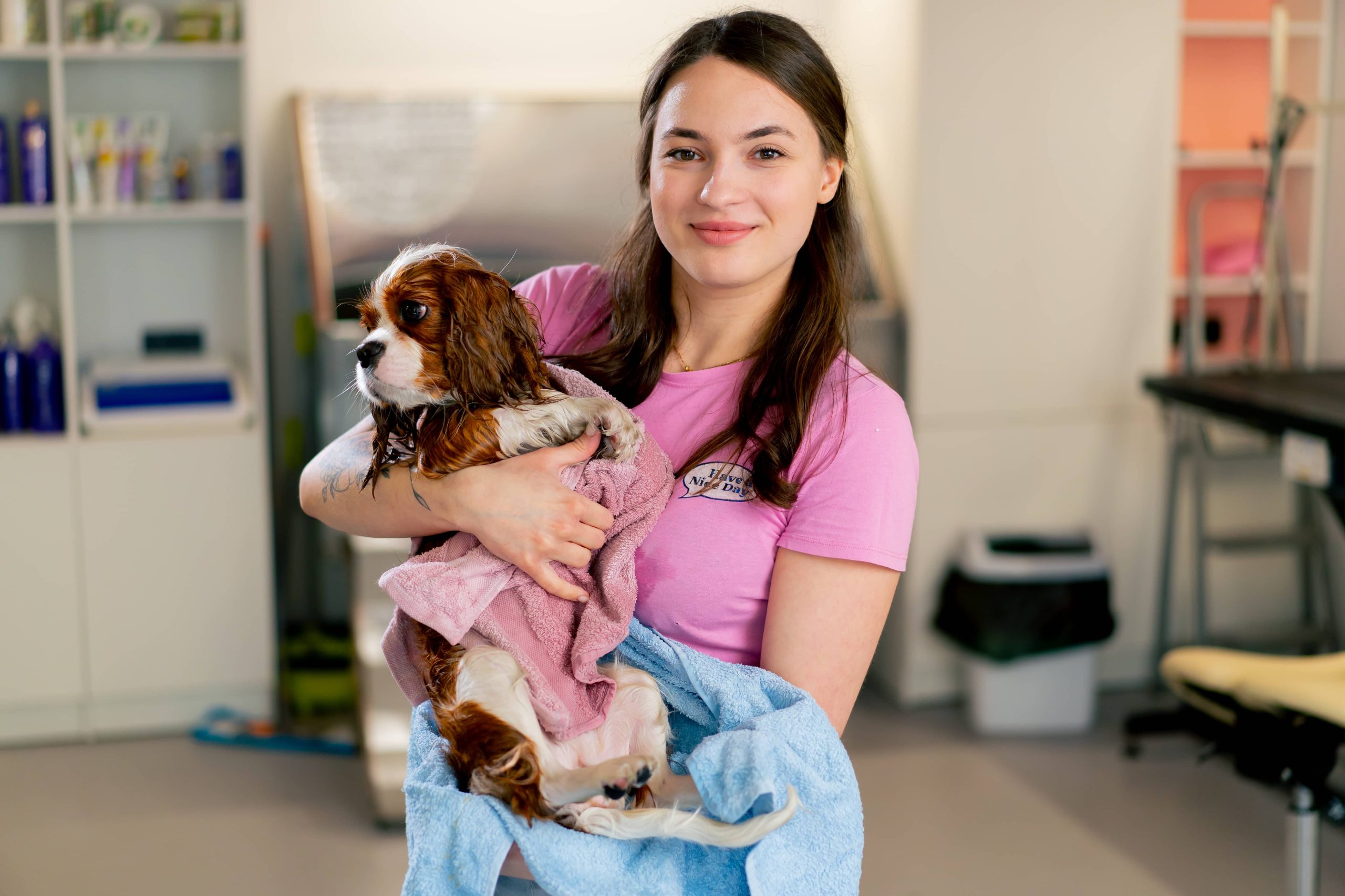
Keeping Your Pet’s Coat Shiny and Healthy
As pet owners, we often take pride in the appearance of our furry friends, and one of the main indicators of a pet’s overall health is their coat. A shiny and healthy coat doesn’t just look appealing; it reflects the good health and well-being of your pet. Ensuring that your pet’s coat stays in top condition requires a blend of proper nutrition, regular grooming, and maintaining their overall health. In this blog post, we’ll explore various tips and strategies to help keep your pet’s coat shiny and healthy.
Proper Nutrition: The Foundation of a Healthy Coat
The saying “you are what you eat” applies to our pets as well. Nutrition plays a pivotal role in the health of your pet’s coat. A balanced diet rich in essential nutrients will help ensure that your pet’s skin and fur remain in optimal condition.
1. High-Quality Protein
Protein is the building block of a healthy coat. Ensure your pet’s diet includes high-quality protein sources like chicken, beef, fish, or lamb. Proteins are essential for skin cell development and fur growth.
2. Omega-3 and Omega-6 Fatty Acids
Fatty acids are crucial for maintaining a shiny coat. Omega-3 and Omega-6 fatty acids help reduce inflammation and promote skin health. These can be found in fish oil, flaxseed oil, and certain pet foods formulated with added fatty acids. Supplementing your pet’s diet with these nutrients can lead to noticeable improvements in coat sheen.
3. Vitamins and Minerals
Vitamins and minerals such as Vitamin E, zinc, and biotin are vital for skin and coat health. Vitamin E acts as an antioxidant, protecting skin cells from damage. Zinc helps in repairing tissue, while biotin supports healthy hair and nail growth. Ensure that your pet’s food contains these vitamins and minerals or consider supplements after consulting with your veterinarian.
4. Hydration
Water is often overlooked but is crucial for keeping your pet’s skin hydrated and their fur shiny. Always provide fresh water for your pet and ensure they are drinking enough, especially during hot weather or after physical activities.
Regular Grooming: Keeping the Coat Clean and Manageable
Grooming is not just about maintaining cleanliness; it helps stimulate natural oil production that keeps the coat lustrous.
1. Brushing
Regular brushing is one of the simplest yet most effective ways to maintain your pet’s coat. Brushing helps remove dirt, debris, and loose hair while distributing natural oils along the hair shaft. The frequency of brushing depends on your pet’s coat type:
– Short-haired pets: Once a week
– Medium-haired pets: Few times a week
– Long-haired pets: Daily
Choose the right brush for your pet’s coat to avoid any discomfort.
2. Bathing
Bathing your pet helps keep their coat clean and smelling fresh, but it’s essential to strike a balance. Overbathing can strip natural oils, causing dryness and irritation. Use a pet-specific shampoo that’s gentle on their skin, and follow your vet’s recommendations on how often to bathe your pet. Typically, once a month is sufficient, but pets with specific conditions or those that get dirty frequently may require more frequent baths.
3. Conditioners and Leave-in Sprays
Using a conditioner or a leave-in conditioning spray can help detangle hair and add moisture to their coat, making it look shiny and healthy. Be sure to use products specifically designed for pets to avoid any adverse reactions.
Health Maintenance: Regular Vet Checks and Parasite Control
Maintaining your pet’s overall health has a direct impact on their coat.
1. Regular Vet Visits
Routine check-ups with the veterinarian can help catch potential health issues early. Skin conditions, allergies, or underlying health problems can affect your pet’s coat. Your vet can recommend treatments or dietary changes that can improve coat health.
2. Parasite Control
Fleas, ticks, and other parasites can cause itching, irritation, and hair loss. Year-round parasite control is essential. Consult with your veterinarian to choose the appropriate preventive measures, such as topical treatments, oral medications, or collars.
3. Addressing Allergies
Pets can suffer from food or environmental allergies, which can lead to skin irritation and dull coats. Identifying and managing allergies through diet changes or medications can significantly improve your pet’s coat health.
Environmental Factors: Creating a Pet-Friendly Environment
Your pet’s environment can also impact their coat health.
1. Humidity and Temperature Control
Extreme weather conditions can affect your pet’s skin and coat. Keep your home at a comfortable temperature and use a humidifier during dry seasons to prevent skin dryness.
2. Stress Reduction
Stress can lead to excessive shedding and coat issues. Provide a calm and secure environment for your pet. Ensure they have a comfortable space to rest and engage in regular playtime to keep them happy and stress-free.
Bonding Time: Strengthening Your Pet-Owner Relationship
Grooming sessions and caring for your pet’s coat provide an excellent opportunity to bond with your furry friend. These activities strengthen your relationship and help you notice any changes in their coat or skin early on.
1. Patience and Positive Reinforcement
Make grooming a pleasant experience by being patient and using positive reinforcement. Reward your pet with treats and praise during grooming sessions to create a positive association.
2. Regular Inspection
While grooming, inspect your pet’s skin and coat for any abnormalities such as lumps, bumps, or hot spots. Early detection of any issues allows for prompt treatment and prevents further complications.
Conclusion
A shiny and healthy coat is a clear indicator of a happy and well-cared-for pet. By focusing on proper nutrition, regular grooming, health maintenance, and creating a stress-free environment, you can help ensure that your pet’s coat remains in excellent condition. Remember that every pet is different, and what works for one may not work for another. Always consult with your veterinarian for personalized advice and care. With a little effort and attention, you’ll have a pet that not only feels great but looks great too!






